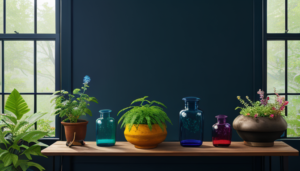Overwatering can lead to root rot and yellowing, while underwatering causes stress. Strike a balance by allowing the soil to dry between waterings. Remember, moist, not soggy, is the key to a happy snake plant!
Snake plants are like Goldilocks, they want their soil not too wet, not too dry, but just right!
Insufficient light may result in yellow leaves at the base. Place your snake plant in bright, indirect light for optimal growth. Just like us, these plants need their daily dose of sunshine to thrive .
Think of your snake plant as a sunbathing enthusiast, it craves that light like a beach lover! ️
Check if your snake plant has outgrown its pot. Repot if roots are circling the base. Ensure proper drainage to prevent waterlogging. Remember, a happy root system means a happy plant !
Don’t suffocate your snake plant in a tiny pot, give it room to stretch those roots like yoga class!
Inspect the soil for pests like fungus gnats or mealybugs, which can cause stress and yellowing. Treat infestations promptly with natural remedies or insecticidal soap. Keep those pesky intruders at bay!
Bugs in the soil? It’s like hosting a party for uninvited guests, time to show them the door with a gentle but firm approach!
Nutrient deficiencies can manifest as yellow leaves. Provide a balanced fertilizer during the growing season. Avoid over-fertilizing, as it can harm the plant. Feed your snake plant like the royalty it is !
Your snake plant deserves a royal feast, not a fast-food diet. Treat it like a king and watch it flourish like a crown jewel!
Extreme temperatures can shock your snake plant, leading to yellowing. Maintain a consistent temperature range, ideally between 60-80°F. Protect your plant from drafts and sudden temperature changes. Keep it cozy and comfortable!
Your snake plant is not a fan of surprises, keep its environment as stable as a zen garden for ultimate happiness!
Root rot is a common culprit of yellowing at the base. Trim affected roots, repot in fresh soil, and adjust watering habits. Ensure proper aeration and drainage to prevent future rot. Save your plant’s roots, save the day!
Root rot is like a sneaky villain, but you can be the hero by saving your plant’s roots. Time to play the role of a horticultural superhero! ♂️
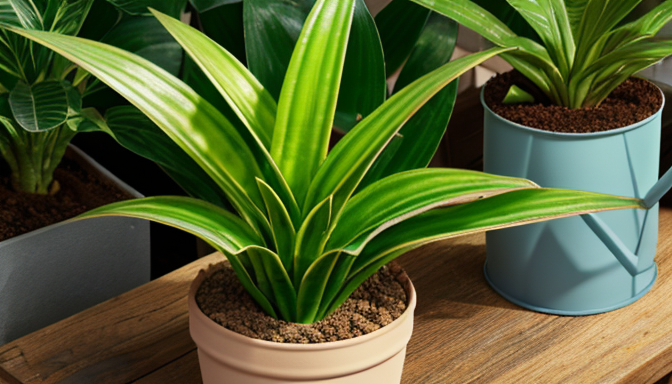
Watering Woes: Finding the Right Balance
Overwatering can turn your snake plant’s roots into a soggy mess, like a marsh in the desert. On the flip side, underwatering will leave your plant as parched as a cactus in a rainstorm. Striking a balance is key; think of it as finding the perfect dance partner for your plant. Let the soil dry out between waterings, keeping it moist, not drowning. Your snake plant will thank you with vibrant green leaves that shimmer like emeralds in the sunlight!
Remember, plants are like Goldilocks – they need everything just right. Too much water, and they drown; too little, and they wither. So, be the plant whisperer, the water wizard, the moisture magician. Give your snake plant the hydration it craves, the moisture it deserves, and watch it flourish like a botanical superstar!

Sunlight Struggles: Light Requirements Unveiled
Being a plant parent isn’t just about providing water; it’s about understanding your green companions’ needs.
Insufficient light can leave your plant feeling a bit blue, or should I say yellow? To keep those leaves green and vibrant, place your snake plant in bright, indirect light. Think of it as giving your plant a sunny vacation without the risk of sunburn! Remember, a happy plant equals a happy you!When it comes to sunlight, snake plants are no exception..
Now, let’s shed some light on this topic, shall we? Picture your snake plant basking in a cozy spot, soaking up those rays like a sun-loving superstar. Just like us, these plants need their daily dose of sunshine to thrive . So, if you notice those base leaves turning yellow, it might be a cry for help from your plant, saying, “Hey, I need more light, please!” Give your snake plant the spotlight it deserves, and watch it flourish like the star it is in your indoor garden. Remember, a little sunshine goes a long way in keeping your plant healthy and happy!
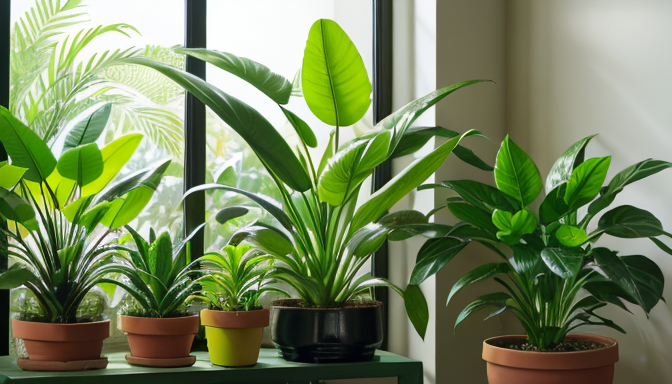
Pot Problems: Root Bound or Room to Grow?
Check if your snake plant has outgrown its pot. Repot if roots are circling the base. Ensure proper drainage to prevent waterlogging. Remember, a happy root system means a happy plant !
Are your snake plant’s roots feeling cramped, like a crowded subway train during rush hour? It’s time to give them some space to stretch and grow! Imagine if you had to live in a tiny apartment with no room to move – not ideal, right? Your plant feels the same way when it’s root-bound. Give it a new home with more legroom, and watch it flourish like a botanical superstar!
Pro Tip: When repotting, gently tease the roots apart to encourage them to explore their new surroundings. Think of it as giving your plant a ticket to a first-class botanical vacation – luxury all the way! Remember, a happy plant starts from the roots up .

Pest Predicament: Uninvited Guests in the Soil
Exploring the reasons behind the yellowing of the base of your snake plant, along with practical solutions to restore its health and vibrancy. Let’s delve into the world of snake plants and horticultural care with a touch of humor and expertise!
Inspect the soil for pests like fungus gnats or mealybugs, which can cause stress and yellowing. Treat infestations promptly with natural remedies or insecticidal soap. Keep those pesky intruders at bay!
Oh, the horror of finding uninvited guests in your plant’s cozy soil! It’s like hosting a party and having unwanted visitors show up. But fear not, dear plant parent, for we shall conquer these sneaky invaders with our trusty natural remedies and insecticidal soap. Remember, a healthy plant is a happy plant, free from these soil-dwelling troublemakers. Let’s show those pests who’s boss and restore our plant’s peace and greenery!
Inspect, identify, and eliminate – the three steps to a pest-free paradise for your beloved snake plant.
With a bit of care and the right tools, we can banish them from the soil and ensure our plant thrives in a pest-free environment. Let’s keep our soil clean, our plants green, and our spirits high as we tackle this pest predicament head-on!Stay vigilant, for these tiny foes can wreak havoc on your plant’s well-being..
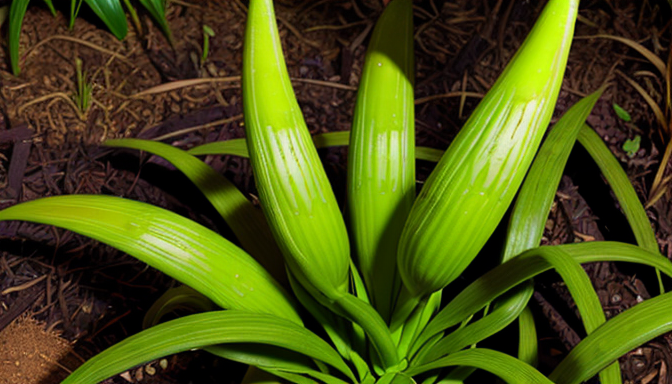
Nutrient Nourishment: Feeding Your Snake Plant
Feeding your snake plant is like preparing a royal feast for a botanical monarch. Just like us, these green royalty need their nutrients to shine bright like a diamond! Nutrient deficiencies can be a sneaky culprit behind those yellow leaves, so it’s time to step up your plant feeding game. Choose a balanced fertilizer fit for a king or queen and watch your snake plant flourish in all its regal glory. Remember, moderation is key – don’t drown your plant in nutrients, a little sprinkle of fertilizer goes a long way in the plant kingdom.
In the world of snake plants, a well-fed plant is a happy plant. Picture your snake plant wearing a tiny crown, basking in the glory of a nutrient-rich soil. Treat your plant with care and respect, for it is a noble being in the botanical realm. So, grab your fertilizer, don your gardening gloves, and show your snake plant some love fit for a verdant monarch. Feed your plant like the royalty it is, and watch it thrive and grow with grace and elegance. A well-fed snake plant is a sight to behold, a true testament to your horticultural prowess. Let the feeding frenzy begin!

Temperature Troubles: Chilling or Overheating?
Exploring the reasons behind the yellowing of the base of your snake plant, along with practical solutions to restore its health and vibrancy. Let’s delve into the world of snake plants and horticultural care with a touch of humor and expertise!
Extreme temperatures can shock your snake plant, leading to yellowing. Maintain a consistent temperature range, ideally between 60-80°F. Protect your plant from drafts and sudden temperature changes. Keep it cozy and comfortable!
Maintaining the right temperature for your snake plant is crucial for its well-being. Just like us, plants can also feel too hot or too cold. Imagine your snake plant sipping a cool drink in the shade or basking in the gentle warmth of the sun. Providing the perfect temperature is like giving your plant a hug . Remember, a happy plant is a plant that’s just the right temperature!
In the world of snake plants, temperature matters more than you might think. So, be the temperature wizard your plant needs and create a cozy oasis for it to thrive. Let’s keep those temperature troubles at bay and watch your snake plant flourish like never before!
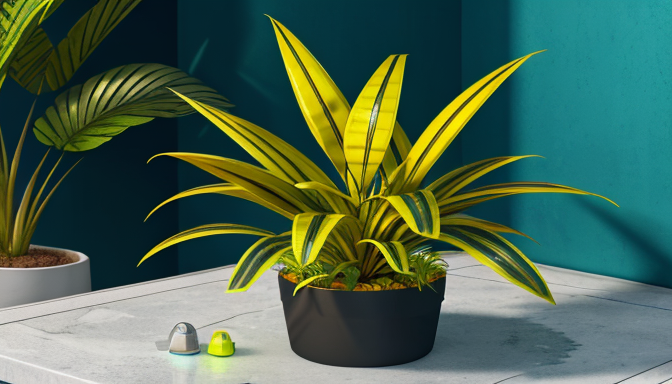
Root Rot Riddle: Rescuing Your Plant’s Foundation
Exploring the reasons behind the yellowing of the base of your snake plant, along with practical solutions to restore its health and vibrancy. Let’s delve into the world of snake plants and horticultural care with a touch of humor and expertise!
Root rot, oh what a dreadful plight for our green companions! This sneaky villain lurks beneath the surface, causing havoc at the very foundation of our beloved snake plants. Fear not, dear plant parent, for we shall unravel this riddle together and emerge victorious!
When facing the treacherous root rot, swift action is crucial.
Repot your plant in fresh, well-draining soil, providing a clean slate for rejuvenation. Remember, proper aeration is the key to a happy root system – let your plant breathe freely! Adjust your watering habits, for soggy soil is the enemy we must defeat. With determination and care, we can rescue our plant’s foundation from the clutches of root rot and restore its vitality once more.Trim those affected roots with a steady hand, like a skilled surgeon saving a life..
Let us embark on this noble quest, armed with knowledge and compassion, to ensure our snake plants stand tall and proud, free from the grasp of root rot’s malevolent embrace. Together, we shall be the heroes our leafy friends deserve, preserving their green glory for generations to come!

Frequently Asked Questions
- Why is my snake plant’s base turning yellow?
The yellowing of the base of your snake plant can be due to various reasons such as overwatering, underwatering, insufficient light, root-bound conditions, pests, nutrient deficiencies, extreme temperatures, or root rot.
- How can I fix the yellowing at the base of my snake plant?
To address the yellowing issue, you can adjust your watering practices, ensure proper light exposure, repot if needed, inspect for pests, provide balanced nutrition, maintain ideal temperatures, and treat root rot promptly with appropriate measures.
- What should I do if my snake plant shows signs of root rot?
If your snake plant displays symptoms of root rot such as yellowing at the base, it’s crucial to trim affected roots, repot in fresh soil with good drainage, and modify your watering routine to prevent further root damage and promote recovery.
- The Lost Book of Remedies - August 9, 2024
- Will Adding Soil Kill Grass?A Comprehensive Guide to the Effects of Soil on Grass Growth - July 16, 2024
- Georgian Flowers: A Bloomin’ Bouquet of Beauty - July 15, 2024






